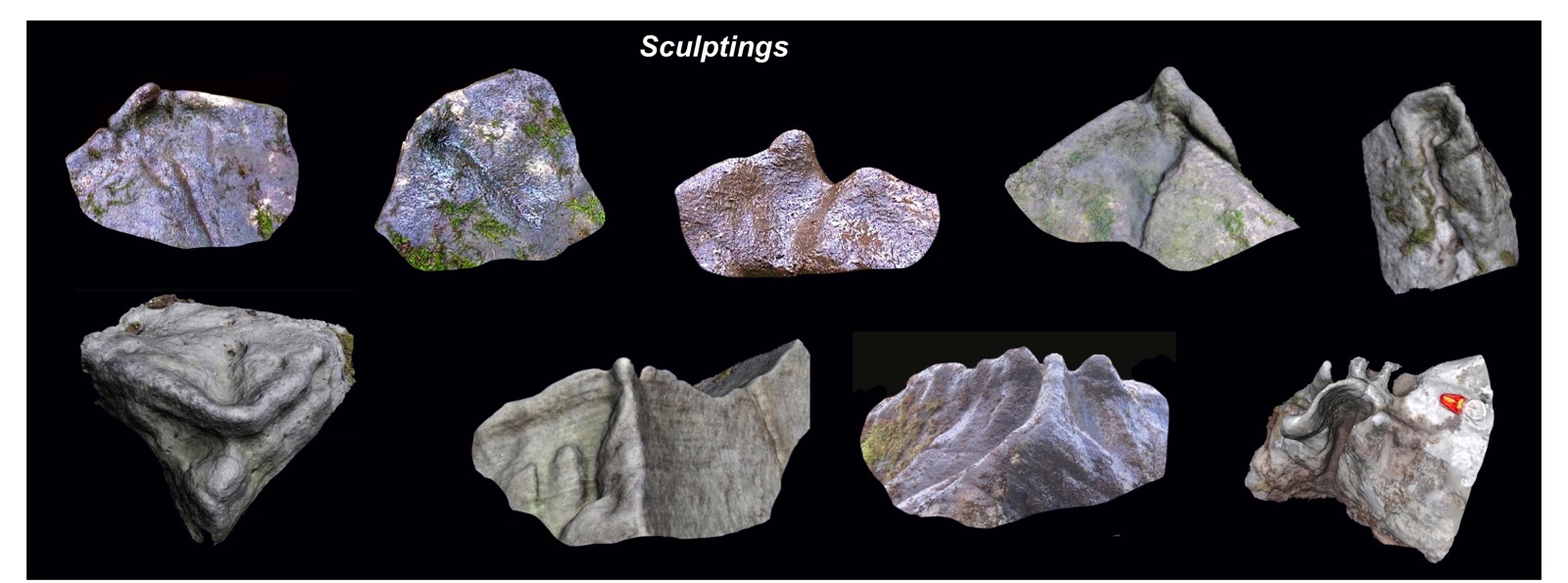NOTE These pages are being regularly updated.

|
****************************************************************** Peaks and notches. These are best considered together as they tend to occur together, often on apex corners of sculpted boulders. They are also the most obvious anthropogenic sculpting features. To create these relief features a considerable amount of rock has had to be removed using a stone hammer. Quite often considerable additional work may have been done on the boulder rims/ridges. Peaks and notches can be validated as a type as they occur on numerous evidence boulders. |
 |
 |
|
****************************************************************** Rims/ridges. These are the most subtle of the sculpting features yet they are the best validated as most of the Evidence Boulders display these features. The best examples occur on ‘split’ Evidence Boulders as the sharp edges of the unworked sides contrast strongly with the sculpted rounded rims often created with grooves around the rim. Rim grooving is where a worked edge occurs – usually on the top of a boulder with a relatively level top and a vertical face. A Ridge is where there is an almost equal slope on both side of the edge. Examples of rims can be seen in most of the hollows and channels examples above. |
|
| Ridge
PB66 Ridge |
Ridge
PB37 Ridge |






